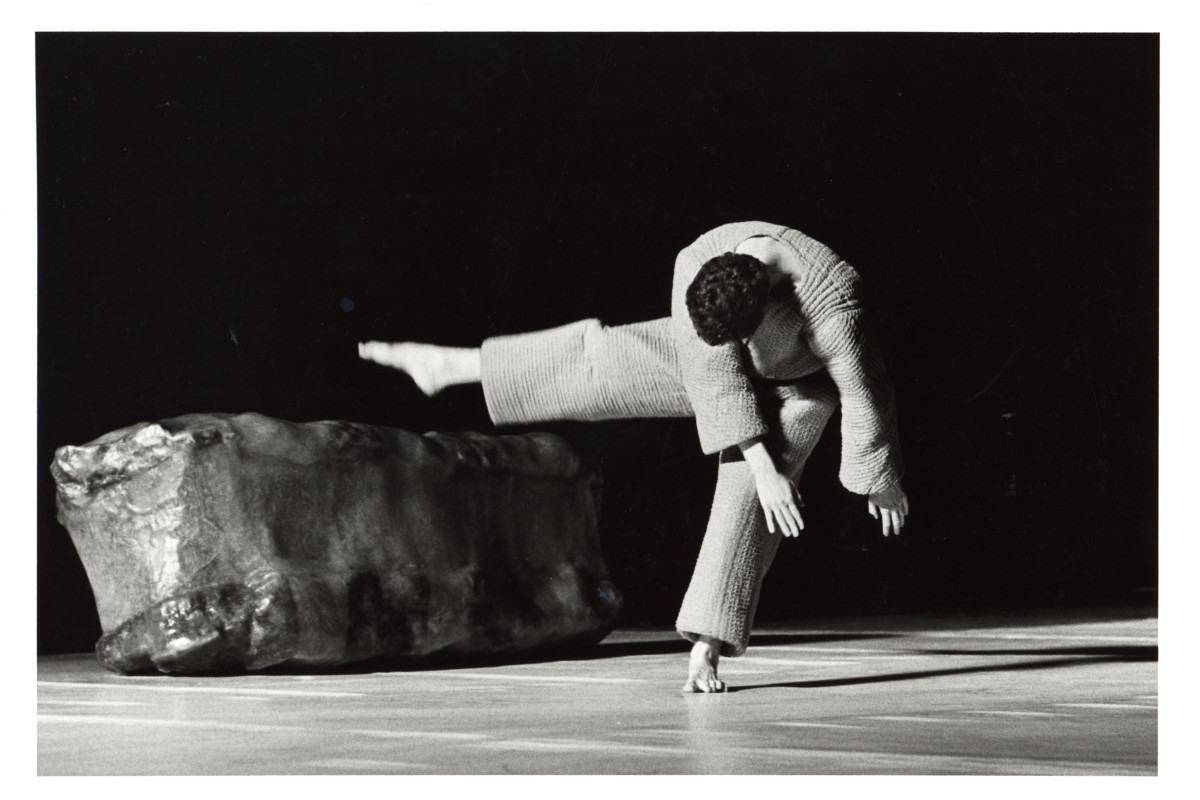Choreography: Boris Charmatz &
Dimitri Chamblas
Les Disparates
Two-headed solo
Joyful and nostalgic, this work for a dancer and Toni Grand’s sculpture evokes fragmenting «states of dancing». Brought forth without transition are the performer’s conflicting desires and (tugging) physical intentions.
What we need is dead silence and lighting activated by a simple switch. A man alone next to a heavy, immobile structure; magnificent harmonies, powerful chords mixed together striking here and there; and three costumes. There will be a lot of very personal, highly complex, rich, mad, and utterly incommunicable gestures, without too much concern about transitions. We would also need to put our little performative story in the context of the fundamental notions in the history of modern dance, which would be done in three parts.
The first part would be exacerbation, pathos, engagement.
The second part—abstraction, distancing, mastery, relief.
The third would be introduction to joy, infatuation, the memory of Parisian parties.
(The idea is that these three aspects would allow one to go through all the variants of the “state of dance.” Starting from the bile, touching on the cerebellum and going back to the heart, reaching out to the universal just by extending our fingers from the stage.) We would need to let the ghosts return for a moment, think of the dead, dedicate this odd mix to those who are departing. This would be very serious and very spirited. When we were working on Les Disparates, we were thinking of interesting collaborations between visual artists and choreographers such as Factory (which put Hervé Robbe and his performers together with Richard Deacon) and Projet de la Matière (produced by Odile Duboc with Marie-Josée Pillet). Les Disparates is not a collaboration with Toni Grand, but a chosen work by the artist so that it can be brought as such to the stage. We were looking for an immobile counterpoint to our activity: this sculpture represents for us a non-spectacular aesthetic object that is closed in on itself, inarticulate, a priori resistant to manipulation and displacement, heavy, even though its 700 kilos are hardly perceptible! Rather than inventing a dance-function for this physical presence, we settled on a dual regime of presence: the presence of a dancing, changing, and visibly aging body, in a constant turmoil of disparate performative choices, and the presence of an object that ignores the attention paid to its own conditions of production even though it offers a way of overcoming that attention.
Boris Charmatz et Dimitri Chamblas
César Vayssié created a film about Les Disparates. Visit this article for more information.
